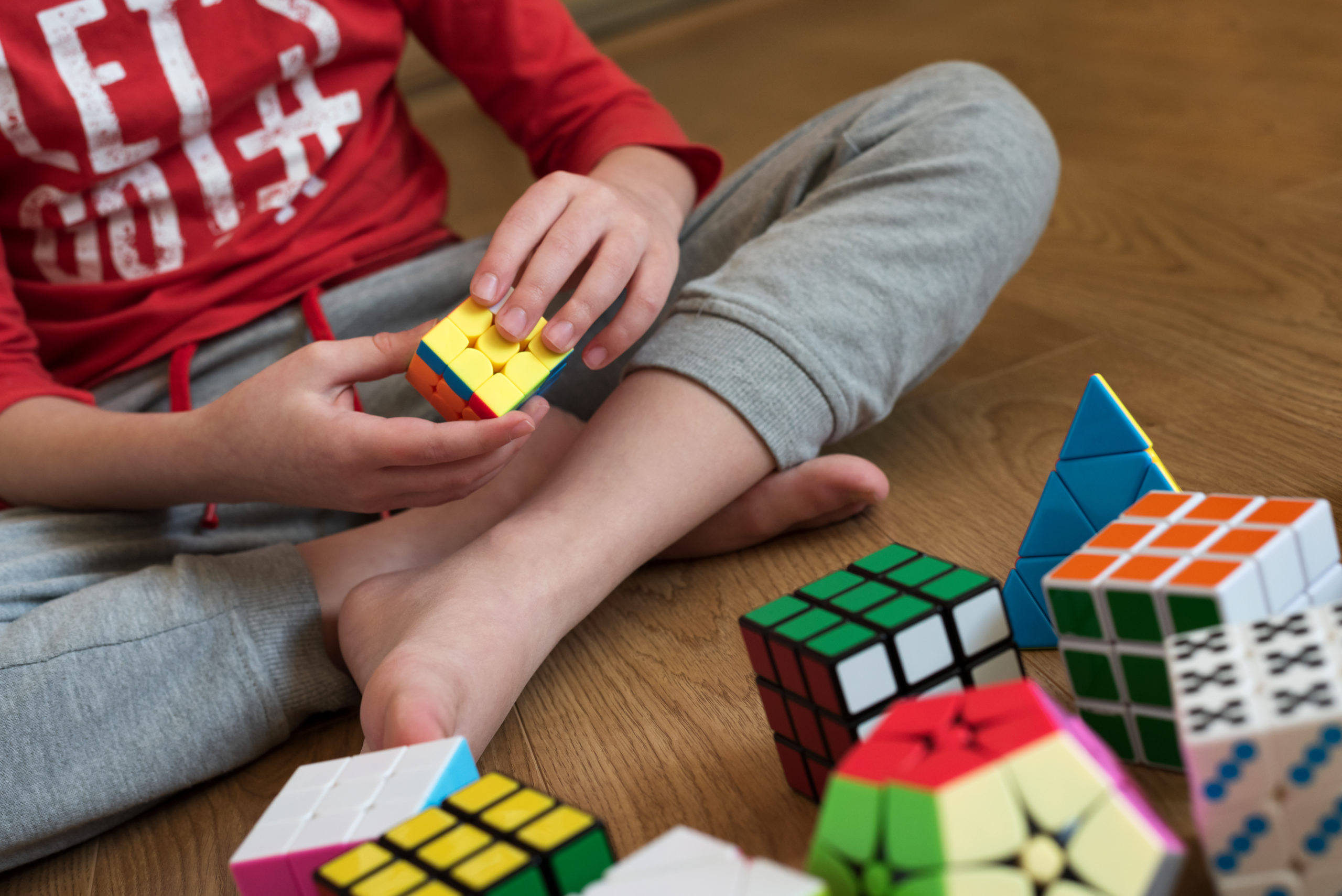My son Bryce is 16 years old. When he was in third grade we moved states, so he was in a new school which required he take an aptitude test. One of the measures on the test was quantitative analysis. He scored a 97%. At age 8. As a parent I looked at that score and thought what in the world am I going to do with that? How do you channel that level of analysis? What does it even look like?
For Bryce, it appeared it in the form of a Rubik’s cube. I don’t remember how he even ended up with one of those multi colored cubes, yet pretty quickly he was fascinated by it. He twisted and turned, watched YouTube videos, and scribbled notes as he began to solve each side. Over and over until each side was a solid color. I had to scramble solved cubes. Then I had to buy a timer. He went from solving a scrambled cube in 2 minutes, then 1 minute, then 20 seconds. He always had a cube with him, solving it wherever we went. One evening we were at a restaurant and he was casually twisting when I realized the 3 or 4 tables around us were all watching. He caught on and sped up, finishing it as people watched, fascinated. A few applauded!
Soon after he was researching competitions; asking me if he could go to Los Angeles, Las Vegas, Boston! No, no, and no. I did finally give in to a local competition at a school about 45 minutes away. He practiced and practiced, determined to qualify for the national Rubik’s cube competition which was in Salt Lake City, UT that year. Up to this point I hadn’t really taken his interest in solving Rubik’s cubes very seriously. However, sitting in the school cafeteria with the other parents I learned who the local champions were; how long they had been doing this, how quickly they solved them, what kind of algorithms they used, and how to monetize their Rubik’s cube skills!
As I watched Bryce compete in round after round that day, several things started to click for me. Bryce continued to improve because as he solved his first cube, he wanted to be faster. Those scribbles and notes from the YouTube videos he watched were different algorithms; as he mastered one way to solve he moved on to the next, more efficient and faster way to solve. There are also different types of cubes, not only in size and shape, but in quality. The plastic ones pop apart if you move too fast, thus I was ordering different cubes from all over the world with special metal bearings that allowed for more speed as they twist.
How many times do we stop problem solving because we are satisfied with where we are? We mastered a solution for our problem, it works, so why revisit it? As we all have experienced in the last few years, mastering a single solution is not enough to be competitive. In order to strive for continuous improvement and transformation, we need to keep studying what will propel us to the next level, whether that’s a different methodology, different equipment, or aligning ourselves with those who will push us to be better. Bryce became so fast because he repeatedly studied all the components of how to solve a cube. He then moved on to different sized cubes, which required learning an entirely different set of algorithms. A few were easier, most were not. However, he had mastered the fundamentals which provided a basis to take on more challenging situations.
Technology enables us to solve that one big problem. Over, and over, and over again. We look for solutions that enable us to be “better”; whether that’s faster, slower, more efficient, measuring whatever the parameters are that define success.
But how much time do we actually spend figuring out how to be better at problem solving? The lessons learned phase of a project allows us to evaluate what worked well and what didn’t, however many times that step is left out when we are up against deadline or another project that needs our attention has already started. We make a mental note where we need to improve and then move right on to the next thing, soon leaving our note out of sight and out of mind.
As our businesses continue to present challenges and problems at an increasing rate, invest in the time to dissect a solved problem. Evaluate how it was solved, reach out to those who can provide a different perspective, and consider different components to enable a better outcome. Continual reflection and learning can not only drive success in one area but serve as a starting point for future success in others.
Tag/s:Business TransformationCreativityDigital DisruptionPersonal Development





